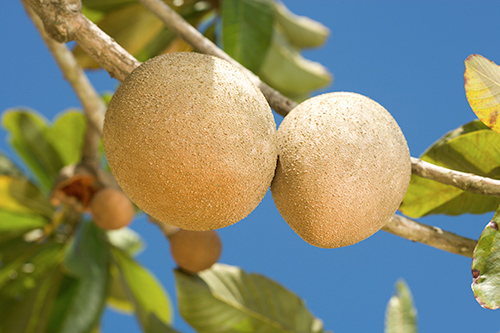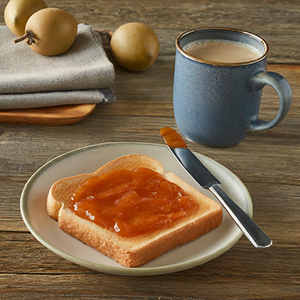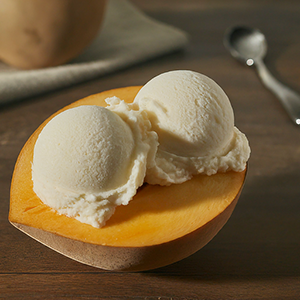Contents
Beneath the sapota’s rough exterior hides a delicate, sweet orange pulp without hinting at tartness. The many sapota health benefits are also evident.

Sapota Scientific Facts
- Scientific name – Calocarpum sapota Merr.
- Scientific synonym – Pouteria sapota L.
- Other names – Sapote.
- French – Sapotille, sapote.
- Spanish – Zapote, mamey.
- German – The fruit of the sapote tree of the botanical family Sapotaceae. The spherical or ovoid fruits may reach 20 cm in diameter and contain a large single seed.
- Environment—Sapotes grow in Mexico, the Antilles, and tropical Africa. Their cultivation is increasing because of their delicious fruit.
Sapota Health Benefits


Sapotas provide considerable energy (134 kcal/100 grams) because of their high carbohydrate content (31.2 percent), primarily from sugars. They are a fantastic source of vitamin C (20 mg/100 grams), potassium (344 mg/100 grams), iron (1 mg/100 grams), and magnesium (30 mg/100 grams). It lacks provitamin A (beta-carotene) and B group vitamins. It is an excellent intestinal astringent because of its richness in polyphenols (tannins). It is recommended in cases of diarrhea and gastroenteritis; it is also beneficial in anemia and malnutrition.
Other Sapotas
Various Central American fruits bear the name sapota because of their similarity in appearance and composition to the true sapota. The most notable are:
- Sapodilla (Manilkara zapota Van Royen = Achras zapota L.), also referred to as naseberry, curly dock, chico sapote, and marmalade plum. This fruit’s pulp is lighter than the sapote’s, containing three seeds instead of one. Chicle, used for chewing gum, is extracted from the tree on which this fruit grows.
- Colombia sapote (Matisia cordata Humb.-Bonpl.), also called “chupachupa” and the red mamey. Its pulp is more fibrous than that of the true sapote.
How to use and Prepare Sapota
- RAW – This is usually how sapotes are eaten. Their pulp has a creamy texture and is sweet and aromatic without a hint of bitterness.
- PRESERVES – Sapote is used in jellies, jams, and ice creams.
DISCLAIMER: All content on this website is presented solely for educational and informational objectives. Do not rely on the information provided as a replacement for advice, diagnosis, or treatment from a qualified medical expert. If you are pregnant, nursing, or have any preexisting medical concerns, talk to your doctor before using any herbal or natural medicines.
REFERENCES
- George D. Pamplona-Roger, M.D. “Encyclopedia of Foods and Their Healing Power.” George D. Pamplona-Roger, M.D. Encyclopedia of Foods and Their Healing Power. Trans. Annette Melgosa. Vol. 2. Chai Wan: Editorial Safeliz, 2005. 220. Print. [Sapota Health Benefits]
- WebMD: https://www.webmd.com/diet/what-health-benefits-sapodillas
- Medindia: https://www.medindia.net/health/diet-and-nutrition/health-benefits-of-chikoo-references.htm
- http://www.ijcrar.com/8-5-2020/Shipra%20Chaudhary%20and%20Rajeev%20Kumar.pdf
Last update on 2025-05-12 / Affiliate links / Images from Amazon Product Advertising API





